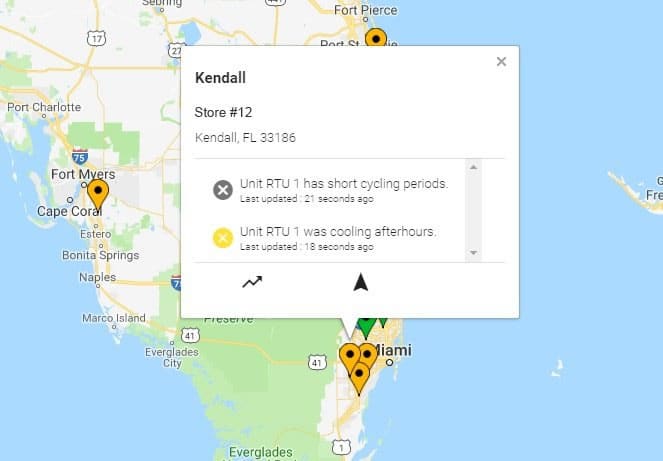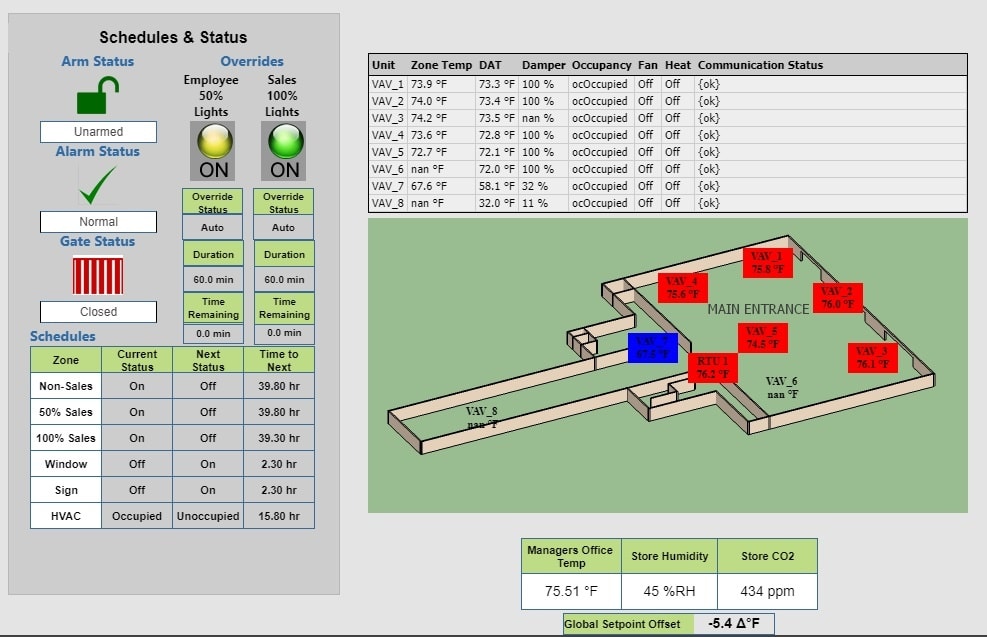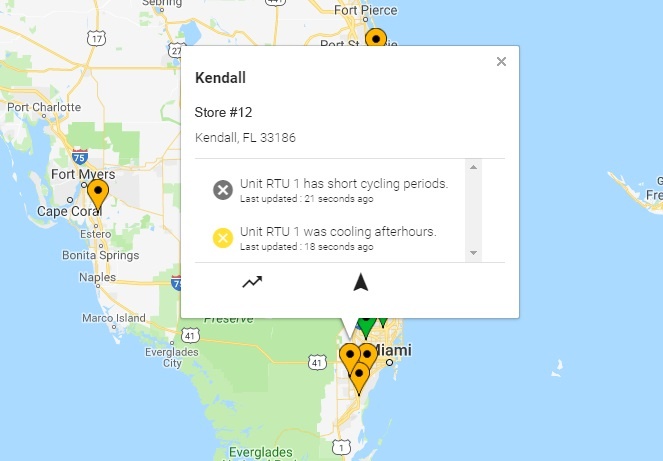How Multi-Site Retailers Are Using BMS & IoT to Improve Efficiency and Comfort

ServiceChannel works with a range of partners in adjacent solution categories, bringing best-of-breed capabilities to the facilities management ecosystem. This is the next in a series of guest posts from our partners highlighting how these new technologies are driving innovation and real value across the enterprise.
A comfortable store environment is critical for maintaining sales in an increasingly competitive retail business. For years, multi-site retailers have invested in sophisticated building management systems (BMS). A BMS collects sensor data to monitor space temperature, humidity, occupancy, lighting and mechanical systems, and uses this data to save energy and provide a comfortable store environment.
Unfortunately, a BMS will degrade over time due to unnecessary overrides, bypass by untrained service technicians and mechanical failure. There are two key problems preventing retailers from realizing the full benefits of their building management system investments.
Ignoring Sensor Data
 |
| Use your BMS to improve environment comfort via sensor data |
A BMS uses sensor data to maintain space temperature and lighting, but does not retain the sensor data. Retaining sensor data for analysis can provide significant insight into facility performance.
Analyzing sensor data can identify common energy wasting events such as:
- Lighting overrides
- Temperature set points over standard
- Simultaneous heating and cooling
- Heating/Cooling while unoccupied
Sensor data analysis can also identify mechanical problems such as: short cycling, malfunctioning sensors and communication issues. Proactively identifying these issues enables the facility manager to correct the problem before it impacts the customers.
Bypassing the BMS
When faced with space temperature, lighting and related issues affecting the customer experience, store managers will do almost anything to resolve the problem. If store managers do not understand the building management system or its operation, this can lead to bypassing and overriding the system to get a “quick fix.” The result:
- Increased energy cost, due to lighting and space temperature overrides
- Unnecessary maintenance cost, to recommission BMS to correct a bypass
- Reduced equipment life, due to short cycling equipment or running equipment inefficiently
Improving the Customer Experience by Linking Building Management Systems to Facilities Management Technology
When installing a building management system, leading retailers are coupling the BMS with an IoT (Internet of Things) solution that continuously monitors sensor data and proactively takes action when comfort factors (e.g., space temperature, humidity, air pressure) are out of tolerance or equipment is not functioning properly.
An IoT solution can detect these problems before they affect the comfort of customers and, working with an integrated facility management system, automatically generate a work order and dispatch it to an appropriate, trained building specialist to diagnose the cause of the problem and take corrective action.
Proactive management of the retail environment provides several benefits.
-

Identify specific location where sensor identifies issue requiring service Reduce or eliminate the need for bypassing or overriding the building management systems
- Reduce energy cost, often by as much as 20%
- Provide more comfortable and productive store environment
- Reduce unnecessary service calls by providing expert remote diagnostics
- Dispatch service technicians only when necessary
- If the corrective action requires dispatching a technician, enable sophisticated sensor data collection utilities to automatically generate a work order in a service automation platform.
To achieve these benefits, you may now use Energy Control to monitor your building’s sensors and underlying BMS, and connect it to the ServiceChannel Service Automation platform. This way, when Energy Control’s sensorFact software detects any issues, it can auto-generate work orders in the ServiceChannel software that are then immediately dispatched to service providers for resolution. This combined solution significantly reduces problem correction time in addition to reducing facility maintenance and energy cost.
Paul Craig is Chief Operating Officer at the Energy Control Companies. Since 1978, the Energy Control Companies have been providing building management solutions to retail customers throughout the United States through the following companies:
 ECCI provides design, engineering, programming, commissioning and service for sophisticated building management systems that reduce operating cost and provide a comfortable shopping environment.
ECCI provides design, engineering, programming, commissioning and service for sophisticated building management systems that reduce operating cost and provide a comfortable shopping environment.
 sensorFact Services provides proactive acquisition, management and analysis of sensor data. Delivering on the promise of IoT, the sensorFact service harvests the sensor data collected by the building management system, organizes it, and applies sophisticated analytics to proactively manage the comfort and efficiency of retail stores.
sensorFact Services provides proactive acquisition, management and analysis of sensor data. Delivering on the promise of IoT, the sensorFact service harvests the sensor data collected by the building management system, organizes it, and applies sophisticated analytics to proactively manage the comfort and efficiency of retail stores.
 ECT is an eCommerce provider of sensors, controllers, valves, drives, actuators and related parts for the efficient operation of mechanical systems.
ECT is an eCommerce provider of sensors, controllers, valves, drives, actuators and related parts for the efficient operation of mechanical systems.
For more information on how integrated solutions from Energy Control and ServiceChannel could help your own, please reach out to [email protected].



